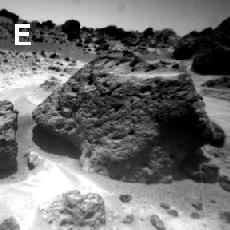This image shows the rock called "Souffle".
Click on image for full size
Image from: NASA/JPL
Martian Weathering by Wind and Sand
Dried debris left after a flood is "wind mobile" and can be lifted into the air by winds. The general process by which this occurs is called "saltation". Saltation is the primary form of abrasion and erosion of the Martian surface. Saltation is carried to an extreme during the frequent Martian global dust storms.
Features found in and near the rocks by the Mars Pathfinder lander provide evidence for both sandblasting and saltation on the Martian surface. The rock shown here, dubbed "Souffle", is surrounded by wind drifts as well as showing evidence of pits and holes formed in the rock by sand erosion.
The power of particles for abrasive action depends upon how many particles are available, their size, and the angle of attack. On Mars the winds accelerate to higher speeds than on Earth so that the sand grains are accelerated to higher speeds as well, and for a greater length of time. This leads to a different angle of impact of sand grains on rocks and affects the gouging and chipping power of sandblasting winds. This makes the erosion of Martian rock a little different than on Earth.
You might also be interested in:
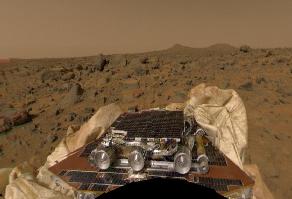
The goal of the Mars Pathfinder (MPF) mission was to analyze the rocks and soil of Mars. The MPF was actually 2 parts, a lander and a rover. The lander stayed right where it landed while the rover named
...more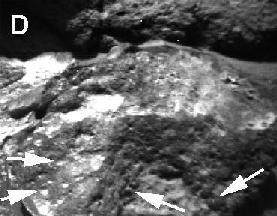
This image shows pits and holes (ventifacts) in a small rock found by the Mars Pathfinder Rover. These ventifacts are artifacts of weathering on Mars and were created by wind erosion. The Souffle rock
...more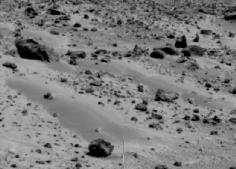
Sand grains on Earth are usually made of quartz. Sand grains of Mars seem to come from basalt. They seem to be particles which are cemented together, rather than round crystal fragments such as sand grains
...more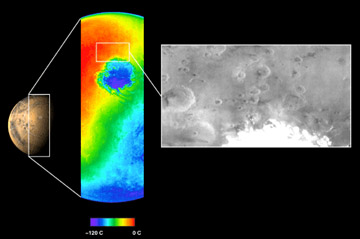
The Mars Odyssey was launched April 7, 2001, from Florida. After a six-month, 285 million-mile journey, the Odyssey arrived at Mars on October 24, 2001. The Odyssey is in its aerobraking phase right now.
...more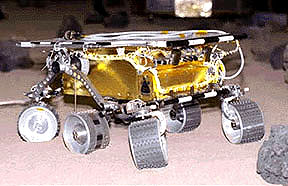
The Mars 2005 mission is still in the planning stages. It is set to launch in the year 2005.
...more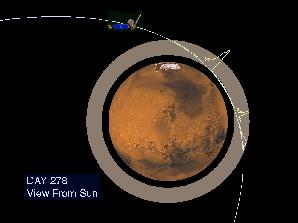
The Mars Global Surveyor reached Mars in September of 1997. But it didn't make it into its final mapping orbit until February 1999. What took so long? Surveyor needed to reach a near-circular, low-altitude
...more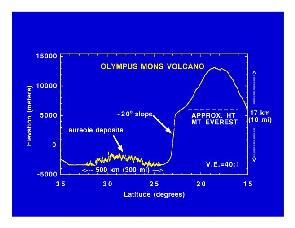
Mars Global Surveyor carries an instrument which measures the heights of things. This instrument is called an altimeter, or "altitude-meter". The graph to the left shows the results returned from Mars
...more


